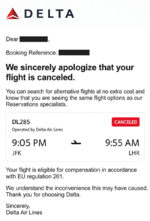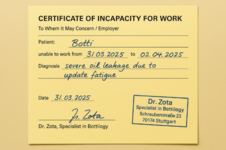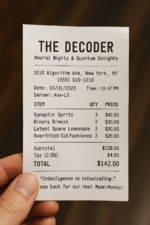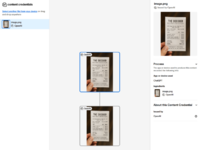- Joined
- 31.10.19
- Messages
- 922
- Reaction score
- 1,921
- Points
- 93
The latest image model from OpenAI allows for the creation of convincing fake documents in mere seconds, potentially undermining existing security systems and providing anyone with access to sophisticated forgery tools. User X, known as "God of Prompt", shared several examples demonstrating the model's capabilities, showing how GPT-4o can generate deceptively realistic images of canceled flight notices, bank transfers, university diplomas or medical prescriptions.
While document forgery has always been possible using traditional image editing software, AI automation is radically changing the landscape. Instead of spending hours on expert work, anyone can now create convincing fake documents in just seconds.
The potential volume of AI-generated forgeries could overwhelm existing verification systems. This becomes particularly concerning in situations where organizations conduct only superficial checks, such as small compensation claims, rental payment histories or initial employment application screenings. Current control mechanisms in companies and government institutions may fail due to the sheer number of potential forgeries. Even with consistent detection rates, the increased number of fake documents raises the likelihood that some will evade detection.
OpenAI has built several safety features to prevent unauthorized use. Each image generated by GPT-4o comes with special C2PA metadata that marks it as AI-generated. The catch is that anyone checking these images must use a specialized verification tool to detect this metadata. Additionally, experienced users may find ways to remove these digital markers.
According to OpenAI representatives, the company has also developed its own internal tool to track whether images were created using GPT-4o. In its system map for GPT-4o, OpenAI states that its goal is to "maximize utility and creative freedom for our users while minimizing harm". The company acknowledges that safety remains an ongoing process and guidelines evolve based on real-world usage.
*AI-generated fake document for a canceled flight illustrates this capability.
While document forgery has always been possible using traditional image editing software, AI automation is radically changing the landscape. Instead of spending hours on expert work, anyone can now create convincing fake documents in just seconds.
*AI-generated medical certificate showing symptoms of illness.
The potential volume of AI-generated forgeries could overwhelm existing verification systems. This becomes particularly concerning in situations where organizations conduct only superficial checks, such as small compensation claims, rental payment histories or initial employment application screenings. Current control mechanisms in companies and government institutions may fail due to the sheer number of potential forgeries. Even with consistent detection rates, the increased number of fake documents raises the likelihood that some will evade detection.
*AI-generated receipt shows how easy it's to forge proof of payment.
OpenAI has built several safety features to prevent unauthorized use. Each image generated by GPT-4o comes with special C2PA metadata that marks it as AI-generated. The catch is that anyone checking these images must use a specialized verification tool to detect this metadata. Additionally, experienced users may find ways to remove these digital markers.
*screenshot showing how specialized tools can read C2PA metadata to verify the origin of an image.
According to OpenAI representatives, the company has also developed its own internal tool to track whether images were created using GPT-4o. In its system map for GPT-4o, OpenAI states that its goal is to "maximize utility and creative freedom for our users while minimizing harm". The company acknowledges that safety remains an ongoing process and guidelines evolve based on real-world usage.









